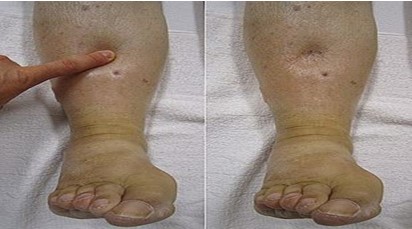A nurse is caring for a client who has bounding pulses, crackles on auscultation, and pink frothy secretions when receiving suctioning.
The nurse should recognize these assessment findings as indicating which of the following?
Increased cardiac output.
Pleural effusion.
Fluid volume excess.
Aspiration.
The Correct Answer is C
“Fluid volume excess.” Bounding pulses, crackles on auscultation, and pink frothy secretions when receiving suctioning are all signs of fluid volume excess.
Fluid volume excess can occur when the heart is unable to pump blood efficiently, causing fluid to build up in the lungs.
Choice A is not the correct answer because the increased cardiac output would not cause these symptoms.
Choice B is not the correct answer because pleural effusion refers to a buildup of fluid between the layers of tissue that line the lungs and chest cavity, which would not cause these symptoms.
Choice D is not the correct answer because aspiration refers to the inhalation of food, liquid, or other substances into the lungs, which would not cause these symptoms.
Nursing Test Bank
Naxlex Comprehensive Predictor Exams
Related Questions
Correct Answer is B
Explanation
Pitting edema is a common and obvious symptom of right-sided heart failure.

This occurs when fluid retention causes swelling in the lower limbs and sometimes the abdomen.
Choice A is incorrect because poor skin turgor is not a common symptom of right-sided heart failure.
Choice C is incorrect because oliguria, or decreased urine output, is not a common symptom of right-sided heart failure.
Choice D is incorrect because S4 galloping heart sounds are not a common symptom of right-sided heart failure.
Correct Answer is D
Explanation
Lithium. Lithium is a medication that has been associated with an increased risk of developing diabetes insipidus. This is because lithium can interfere with the function of the kidneys and their ability to respond to antidiuretic hormone (ADH), which regulates the balance of fluids in the body.
Atorvastatin (choice B) is a medication used to lower cholesterol levels and has not been associated with an increased risk of diabetes insipidus.
Propranolol (choice A) is a beta-blocker used to treat high blood pressure and heart conditions and has not been associated with an increased risk of diabetes insipidus.
Ranitidine (choice C) is a medication used to reduce stomach acid production and has not been associated with an increased risk of diabetes insipidus.
Whether you are a student looking to ace your exams or a practicing nurse seeking to enhance your expertise , our nursing education contents will empower you with the confidence and competence to make a difference in the lives of patients and become a respected leader in the healthcare field.
Visit Naxlex, invest in your future and unlock endless possibilities with our unparalleled nursing education contents today
Report Wrong Answer on the Current Question
Do you disagree with the answer? If yes, what is your expected answer? Explain.
Kindly be descriptive with the issue you are facing.
